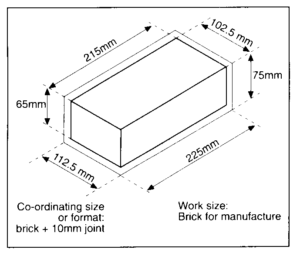Classification of Bricks Based on Raw Materials
Classification of Bricks Based on Raw Materials
Based on raw materials bricks are of the following kinds:
1. Burnt Clay Brick: It is obtained by pressing the clay in moulds and fried and dried in kilns. It is the most used brick. It requires plastering when used in construction works.
2. Fly ash clay Brick: It is manufactured when flying ash and clay are moulded at 1000 degrees Celsius. It contains a high volume of calcium oxide in fly ash. That is why usually described as self-cementing. It usually expands when coming into contact with moisture. It is less porous than clay bricks. It proved a smooth surface so it doesn’t need plastering.
3. Concrete Brick: It is made of concrete. It is the least used brick. It has low compression strength and is of low quality. These bricks are used above and below the damp proof course. These bricks are used can be used for facades, fences and internal brickworks because of their sound reductions and heat resistance qualities. It is also called mortar brick. It can be of different colours if the pigment is added during manufacturing. It should not be used below ground.
4. Sand-lime Brick: Sand, fly ash and lime are mixed and moulded under pressure. During wet mixing, a chemical reaction takes place to bond the mixtures. Then they are placed in the moulds. The colour is greyish as it offers something of an aesthetic view. It offers a smoother finish and uniform appearance than clay bricks. As a result, it also doesn’t require plastering. It is used as a load-bearing member it is immensely strong.
5. Firebrick: It is also known as refractory bricks. It is manufactured from a specially designed earth. After burning, it can withstand very high temperatures without affecting its shape, size, and strength. It is used for the lining of chimneys and furnaces where the usual temperature is expected to be very high.

